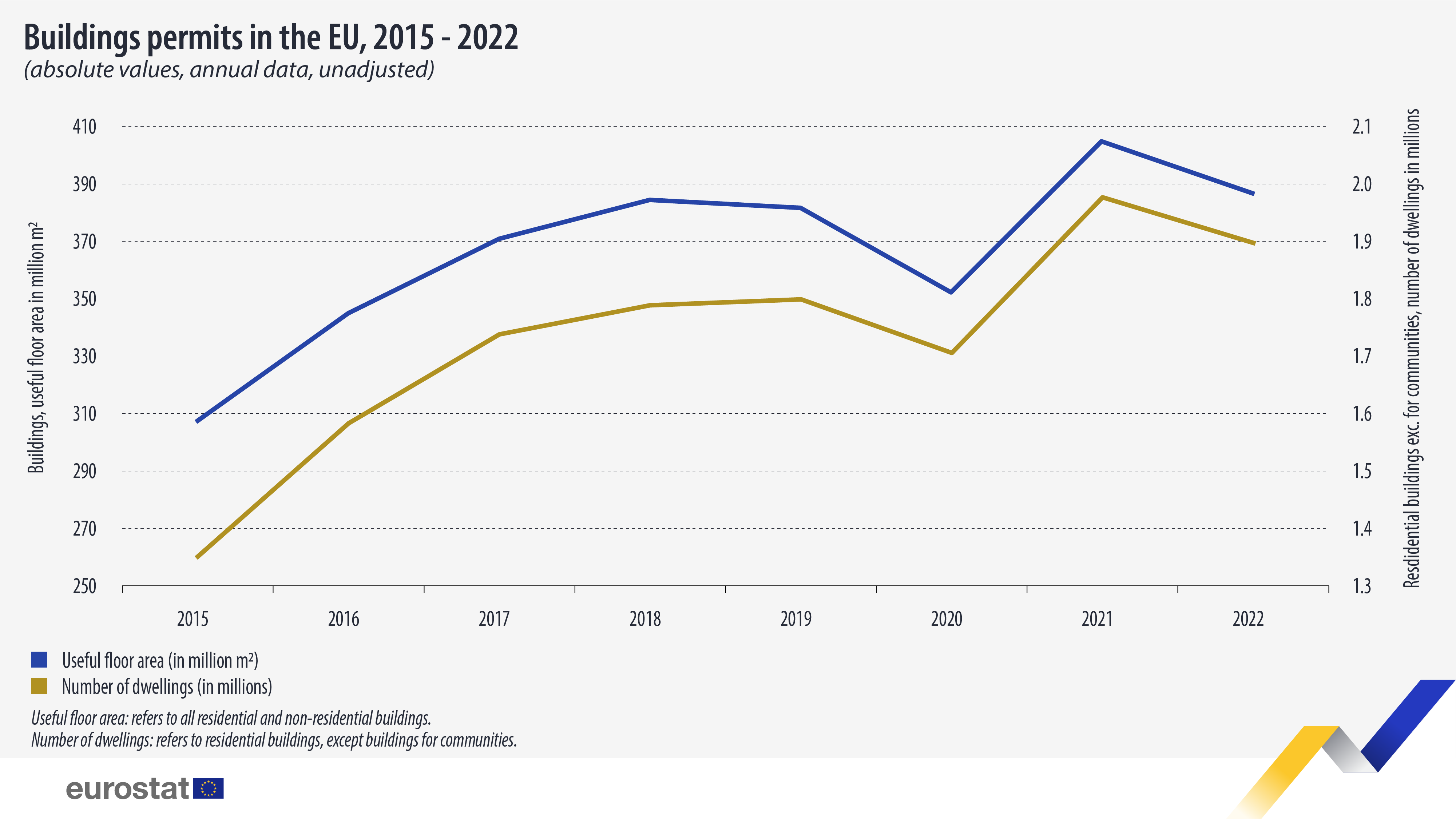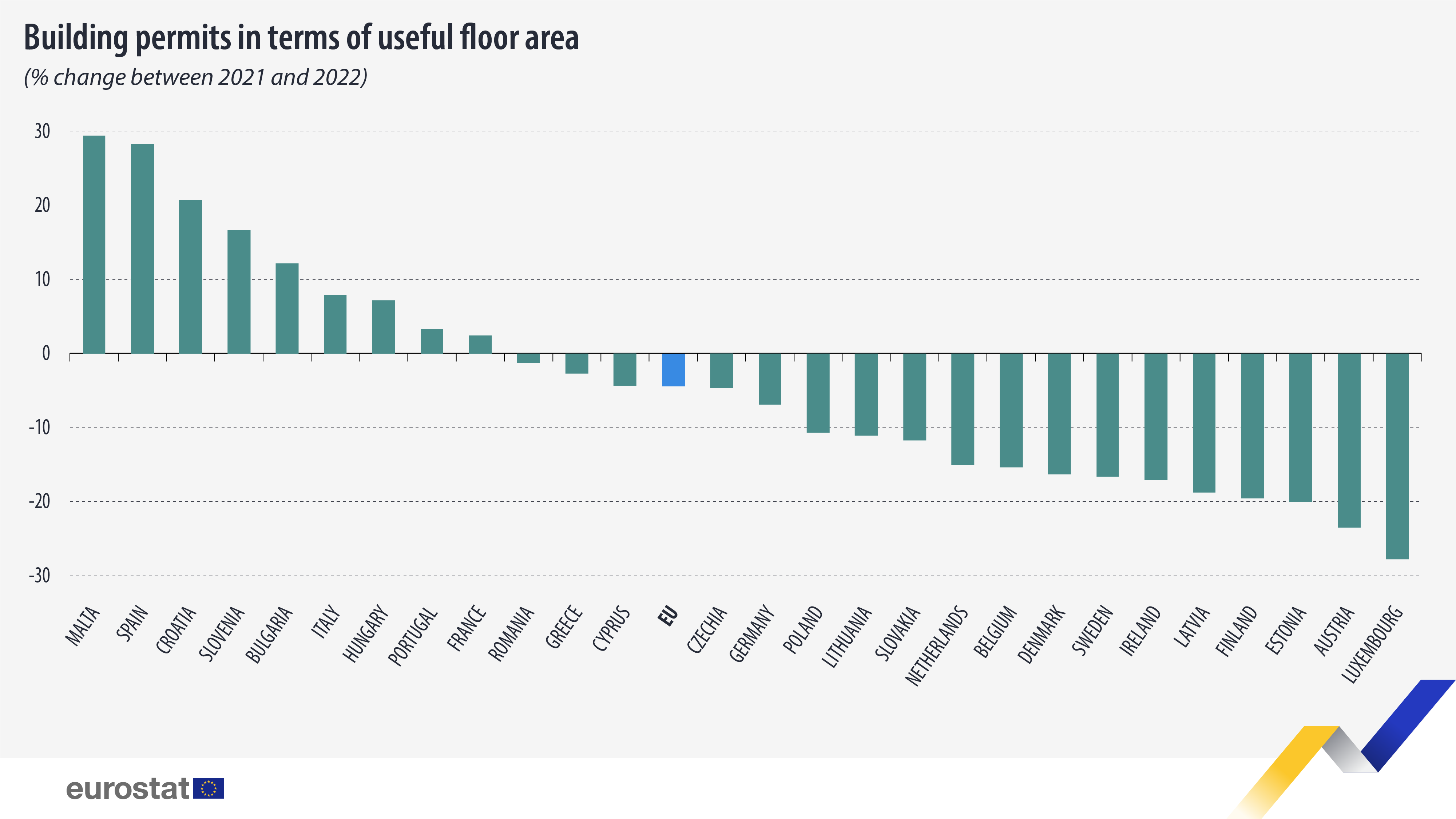Building permits down by 5% in 2022

In 2022, building permits (in terms of useful floor area, measured in millions of square metres; mio m²) went down by almost 5% in the EU to 386.7 mio m² (in absolute terms, 18.1 mio m²). This decrease followed a 15% increase in 2021, reflecting the rebound period in the year after the COVID-19 pandemic peak.
Building permits are also measured by the number of dwellings irrespective of their size. In terms of the number of dwellings, permits also went down by 4% (- 79 100 dwellings) in the EU after an increase of 16% in 2021.
Source dataset: sts_cobp_a
Between 2015 and 2019, the number of permits went up by almost 6% on average per year. The COVID-19 pandemic interrupted these developments; however, the losses of 2020 were compensated with the increase in 2021. In 2022, although there were decreases in both indicators, the number of permits was still high, remaining above pre-pandemic levels.
Compared with 2021, in 2022, building permits (in terms of useful floor area) increased in only 9 EU countries: Malta (+29%), Spain (+28%), Croatia (+21%), Slovenia (+17%), Bulgaria (+12%), Italy (+8%), Hungary (+7%), Portugal (+3%) and France (+2%).
In the remaining EU members, the decreases in the number of building permits varied between -28% in Luxembourg and -1% in Romania.
Source dataset: sts_cobp_a
For more information
- Statistics Explained article on building permit index overview
- Thematic section on short-term business statistics
- Database on short-term business statistics
Methodological notes
- Short-term statistics provide two types of indices for building permits. The "dwelling index" reflects the evolution in terms of the number of dwellings. The "floor area index" reflects the development of the useful floor area for which the building permits are issued. Where the useful floor area is not available, an alternative size measure may be used.
- Building permits in terms of number of dwellings: the data cover only one-dwelling residential buildings and residential buildings with two or more dwellings, but not residential buildings for communities (e.g. residences for the elderly).
- Building permits in terms of useful floor area: the data cover all types of residential buildings (including residences for communities) and non-residential buildings, broken down to offices and other non-residential buildings (covering, for example, hotels, shops, warehouses, industrial buildings, schools and hospitals).
If you have any queries, please visit our contact us page.


